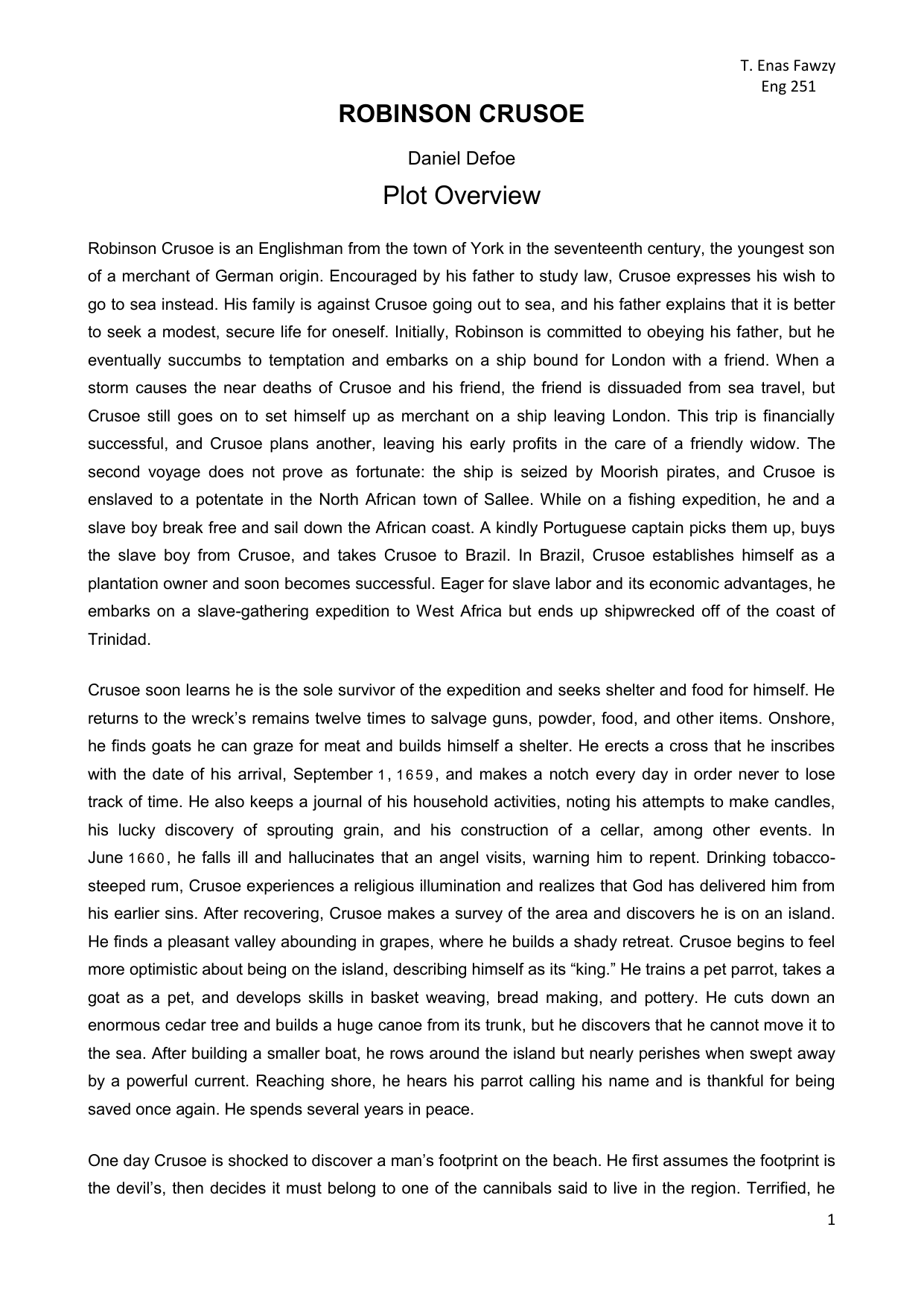

Cruso occupies himself with terracing land, though he doesn’t have anything to plant on the land. They keep a fire burning in a homemade wood stove. They eat bitter lettuce that they grow, as well as fried fish. Cruso sleeps on the bed, Friday on a mat of grass on the floor. Cruso and Friday live in a hut surrounded by a feeble fence. She asks Cruso if he has any implement to remove a thorn from her foot. She cries a little as she tells her story and is irritated by her crying. She rowed toward the island until her blisters were too hard to bear, at which point she dove overboard and swam and was carried by waves. The crew killed the captain by putting a stake through his eye and cast her off with his body in a rowboat. Susan tells him her story: she was traveling on a merchant ship where there was a mutiny (and where, she lets on to the reader, terrible things were done to her). Friday doesn’t talk at all, but he seems to understand Cruso. He wears short britches, homemade sandals, and a pointed hat.

The man leads her across the shore and carries her on his back up a craggy hill where she meet Cruso, a white man with burnt straw-like hair and green eyes. As she describes the island (and through punctuation), it’s made apparent that she’s reflecting on events from a point in the future. Her first thought is that he’s a cannibal and that he’s going to eat her. “A negro,” she says, “with a head of fuzzy wool, naked save for a pair of rough drawers” (6). In the opening of Foe, the novel’s protagonist, a woman named Susan Barton, washes up on the shore of an unknown island with nothing but her tattered petticoat.


 0 kommentar(er)
0 kommentar(er)
